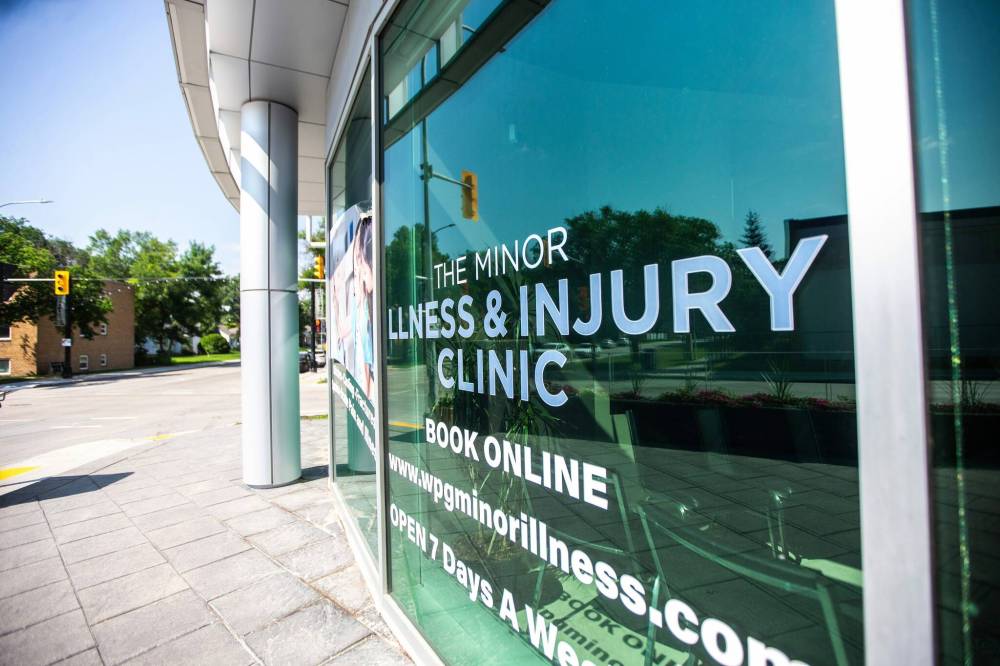Manitoba’s NDP government has been in office nine months and still can’t figure out how to reduce emergency-room wait times.
Cutting ER wait times was one of the NDP’s key campaign promises leading up to last year’s provincial election. Despite several announcements in recent months aimed at speeding up access to ER physicians and nurse practitioners, wait times have increased.
According to new statistics released by the Winnipeg Regional Health Authority Thursday, the median wait time for ERs and urgent-care centres in Winnipeg increased to 3.6 hours in June from 3.52 hours the previous month. It’s up from 2.87 hours in June 2023.

MIKAELA MACKENZIE / FREE PRESS FILES
It makes for a good soundbite, but diverting low-acuity patients from ERs to minor-injury clinics won’t solve long ER wait times, Tom Brodbeck writes.
It’s the same for the longest wait time for nine out of 10 patients (referred to as the 90th percentile). By that measurement, wait times increased to 9.83 hours in June, up from 9.49 hours the previous month. It was 7.37 hours in June 2023.
The main reason ER wait times continue to rise is because government and health authorities are not addressing the core problem: a lack of overall capacity at hospitals. That causes bottlenecks in emergency departments, which ER physicians refer to as “access block.”
When there aren’t enough staffed hospital beds available on medical wards, admitted patients languish sometimes for days in ER hallways waiting for a bed. The more admitted patients there are waiting in ER hallways, the less time emergency-room physicians have to see new patients, and wait times increase.
But instead of tackling that issue — which is complex and expensive — the government has been focusing primarily on trying to divert low-acuity patients from ERs to minor-injury clinics or other non-acute care facilities.
As expected, it hasn’t worked. That’s because study after study has shown diverting low-acuity patients from ERs to clinics has little, if any, impact on wait times.
It makes for good sound bites because, intuitively, it seems like a good idea: get low-acuity patients out of ERs and free up resources for more-acute patients. But that’s not what causes backlogs in ERs. Admitted ER patients who can’t access staffed beds on medical wards are the main drivers.
But solving that problem is a lot more difficult than expanding clinics. Government can’t add more hospital beds overnight because experienced health-care professionals are required to staff them. And those front-line workers, including nurses, are in short supply.
There are other things hospitals can do to improve patient flow through their facilities, including better co-ordination between departments. But those, too, are far more difficult and complex to implement. Announcing expanded hours at minor-injury clinics is a lot easier.
Either way, the ER numbers don’t lie. So far, whatever the NDP government has done to supposedly reduce wait times hasn’t worked. As the Kinew government approaches its one-year anniversary in office in October, the pressure will mount to make good on the election pledges it made last year.
Long wait times are not just an inconvenience for low-acuity patients who wait longer to see a doctor or nurse practitioner than more urgent patients. It means patients who are sick enough to be admitted to hospital are not getting the care they should be getting on medical wards. ER physicians have warned repeatedly that outcomes for patients who wait days in ER hallways suffer compared with those who are treated on medical wards.
What regional health authorities should be releasing on a regular basis are length-of-stay statistics of admitted patients in emergency departments. That would give the public a more accurate picture of what is happening in ERs.
So why do governments insist on misleading the public about how expanding clinics supposedly reduces ER wait times? Because it gives people the impression politicians are doing something about a serious problem. It’s believable, even though ER doctors have repeatedly called out governments that make the claim.
It plays into the falsehood that the main reason we have long ER wait times is because low-acuity patients are going to hospital when they should be seeing their family doctor or visiting a clinic.
More clinics and better access to primary care are important and they improve long-term outcomes for patients. But they don’t solve the immediate problem of admitted patients piling up in ERs waiting for a medical bed.
That problem can only be solved by increasing hospital capacity and improving patient flow. That’s where government and regional health authorities should be focusing their attention.
tom.brodbeck@freepress.mb.ca

Tom Brodbeck
Columnist
Tom Brodbeck is a columnist with the Free Press and has over 30 years experience in print media. He joined the Free Press in 2019. Born and raised in Montreal, Tom graduated from the University of Manitoba in 1993 with a Bachelor of Arts degree in economics and commerce. Read more about Tom.
Tom provides commentary and analysis on political and related issues at the municipal, provincial and federal level. His columns are built on research and coverage of local events. The Free Press’s editing team reviews Tom’s columns before they are posted online or published in print – part of the Free Press’s tradition, since 1872, of producing reliable independent journalism. Read more about Free Press’s history and mandate, and learn how our newsroom operates.
Our newsroom depends on a growing audience of readers to power our journalism. If you are not a paid reader, please consider becoming a subscriber.
Our newsroom depends on its audience of readers to power our journalism. Thank you for your support.